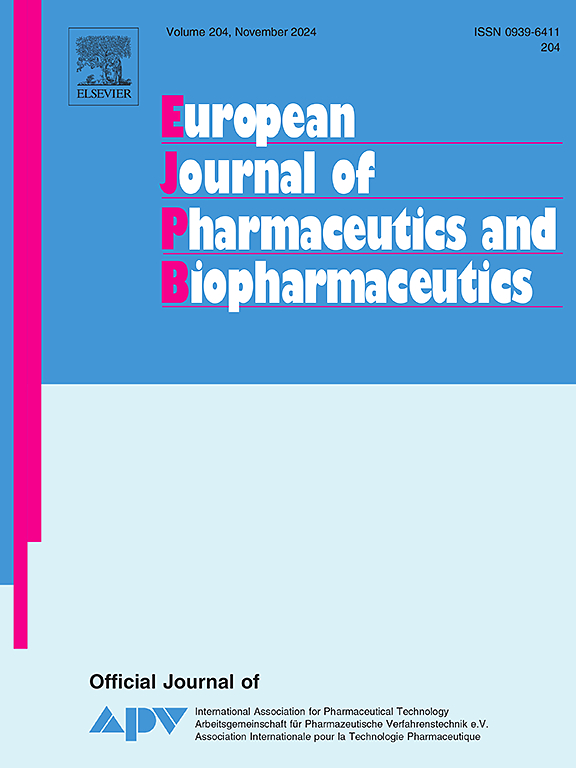Release profiles prediction of diclofenac sodium patches using Raman mapping technique
IF 4.4
2区 医学
Q1 PHARMACOLOGY & PHARMACY
European Journal of Pharmaceutics and Biopharmaceutics
Pub Date : 2025-04-05
DOI:10.1016/j.ejpb.2025.114716
引用次数: 0
Abstract
Objective: To explore a rapid, nondestructive and accurate method for predicting the in vitro release profiles of transdermal system based on Raman mapping. Methods: Commercial diclofenac sodium patches of different production batches were purchased, Raman spectral data of the fixed surface area of all samples were collected and the distribution of active ingredients was visualized. Then the in vitro release of all patch samples was determined as the standard value using the method in the pharmacopeia. Then the partial least squares model and two convolutional neural network models were established to predict the in vitro release of patch samples at specific time points and the parameters of the equation fitting the in vitro release curve. Finally, the prediction accuracy of all models was evaluated. Results: All models showed excellent prediction accuracy for in vitro release fraction at specific time points. For the prediction of equation parameters, the prediction accuracy of partial least squares model is satisfactory. Conclusion: Based on Raman mapping, the establishment of models such as convolutional neural network is a fast and reliable method for characterizing the in vitro release degree of patches. It avoids many shortcomings of traditional methods and has great research potential and application value.

应用拉曼图谱技术预测双氯芬酸钠贴剂的释放谱
目的:探索一种快速、无损、准确的基于拉曼图谱的透皮系统体外释放谱预测方法。方法:购买不同生产批次的双氯芬酸钠贴片,采集所有样品的固定表面积拉曼光谱数据,并可视化其有效成分的分布。然后采用药典方法测定膜片样品的体外释放度作为标准值。然后建立偏最小二乘模型和两个卷积神经网络模型预测贴片样品在特定时间点的体外释放度,并拟合方程参数拟合体外释放曲线。最后,对各模型的预测精度进行了评价。结果:各模型在特定时间点对体外释放分数的预测精度均较高。对于方程参数的预测,偏最小二乘模型的预测精度令人满意。结论:基于拉曼映射建立卷积神经网络等模型是表征贴片体外释放度的一种快速可靠的方法。它避免了传统方法的许多缺点,具有很大的研究潜力和应用价值。
本文章由计算机程序翻译,如有差异,请以英文原文为准。
求助全文
约1分钟内获得全文
求助全文
来源期刊
CiteScore
8.80
自引率
4.10%
发文量
211
审稿时长
36 days
期刊介绍:
The European Journal of Pharmaceutics and Biopharmaceutics provides a medium for the publication of novel, innovative and hypothesis-driven research from the areas of Pharmaceutics and Biopharmaceutics.
Topics covered include for example:
Design and development of drug delivery systems for pharmaceuticals and biopharmaceuticals (small molecules, proteins, nucleic acids)
Aspects of manufacturing process design
Biomedical aspects of drug product design
Strategies and formulations for controlled drug transport across biological barriers
Physicochemical aspects of drug product development
Novel excipients for drug product design
Drug delivery and controlled release systems for systemic and local applications
Nanomaterials for therapeutic and diagnostic purposes
Advanced therapy medicinal products
Medical devices supporting a distinct pharmacological effect.

 求助内容:
求助内容: 应助结果提醒方式:
应助结果提醒方式:


